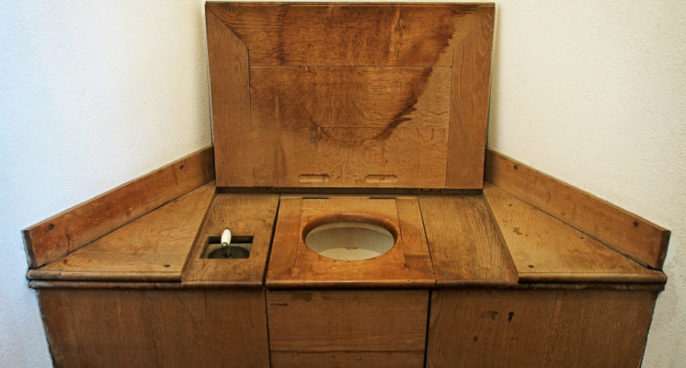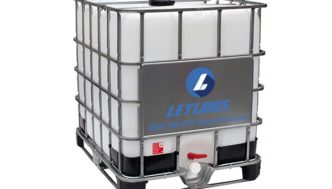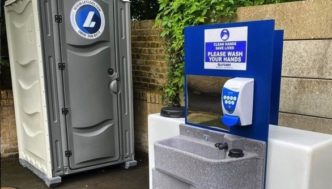
These days, portable toilets are commonly found at a variety of locations all around the globe. Whether it’s the welfare unit at a construction site, the event portable toilet at a music festival or the luxury toilet trailer employed at weddings, it’s quite likely that you yourself will have used these mobile facilities at some point in your life.
However, access to such modern conveniences is a relatively new invention. While portable toilets have existed in some form for millennia, they were fairly primitive until less than a century ago, comprising something unrecognisable from the comparative thrones we perch ourselves upon today. It’s not something you might spend much time contemplating, but the portable potty has a long and varied history.
Here’s a quick rundown of the evolution of such portable WCs, from their humble beginnings in ancient Egypt to the fancy facilities available today – and beyond.
Table of Contents
Ancient portable toilets
The very first recorded example of a portable toilet dates back to the 14th century BC. It was discovered in Egypt in a tomb belonging to Kha, the man responsible for overseeing the work of Deir el-Medina. This lowly workman’s village was employed in creating the Valley of Kings, which housed the remains of dozens of pharaohs from Egypt’s past.
Inside Kha’s tomb, excavators uncovered a wooden stool with a hole cut into its centre, through which the overseer would presumably relieve himself into a vase-like object below. It’s believed that the stool was placed in Kha’s tomb to aid him on his journey in the afterlife, meaning it’s perhaps the only toilet on this list portable enough to traverse worlds.
If Kha, who was in charge of a group of labourers but still relatively low down in the hierarchical system of Egyptian society, used a portable toilet, it’s very likely that many of his compatriots did, too. Especially those in positions of power, though no earlier discoveries of artefacts have confirmed that hypothesis.
The trusty chamber pot
Many later incarnations of Kha’s portable privy took a similar form, but did away with the wooden stool in favour of the pot below on its own. This type of vessel was used throughout Ancient Greece, with historical artefacts dating from the 6th century BC now housed in museums across the globe.
The chamber pot was constructed from a variety of different materials, depending on the timeline, the geographical location and the substances which were available in each. Common materials included tin, lead, earthenware, pottery, ironstone, delftware, stoneware and, later, ceramic and porcelain.
They are so named because they were often used in bedrooms, offering the user the opportunity to relieve themselves without having to leave the comfort of their bed. Their practicality and portability meant that they remained popular until Victorian times.
Enter the thunderbox
By the beginning of the 19th century in Great Britain, the nobility decided that they wished to remove the chamber pot (and the unpleasant smells that it invariably brought with it) from their boudoirs and into a separate location for answering the call of nature. Enter the thunderbox.
This rudimentary portable toilet was not a million miles away from Kha’s contraption all those millennia ago, housing the chamber pot inside a wooden box. As well as being portable and therefore perfect for accompanying lords and ladies if they needed to undertake a long journey, the thunderbox was often also kept in a single location.
This could comprise an outhouse situated at a comfortable remove from the main building, at a location open to the elements or, alternatively, inside a dedicated room in the home. Although rare, thunderboxes are still in use today, but are more often made out of plastic than wood.
Worse things happen at sea
It wasn’t until the 1940s that portable toilets began to resemble the enclosed cubicles we would recognise today. Believe it or not, their inception is closely connected to the shipbuilding industry, since legend has it that one enterprising dock supervisor noticed his men were forever slipping away onto dry land in order to relieve themselves while they were supposed to be working.
To improve efficiency and productivity, the man commissioned the construction of a portable toilet on the ship itself. Although it didn’t differ too much in its basic form from the toilets we know today, it was much heavier, more cumbersome and infinitely trickier to empty. That’s because it was made out of wooden panels and a metal box to house the waste.
This method of construction meant that the toilet was particularly susceptible to retaining the disagreeable smells associated with answering the call of a nature, especially since it was a utilitarian tool used by the entire crew of shipbuilders. Nonetheless, it did the trick, despite the inconvenience and nasty odours.
Deodoriser to the rescue
Fortunately, that latter element was alleviated by the invention of the first deodoriser, with its patent filed in 1943. This device contained a chemical element – initially comprised of formaldehyde – which would help to evacuate the bad smells generated by the occupants of the toilet and replace them with a more neutral aroma.
Today, of course, formaldehyde has been all but eradicated as a deodoriser, given the fact that it can cause problems for wastewater treatment plants and pose a threat to marine life if it ends up in streams, lakes and other waterways. Not to mention the fact that it has been suggested to contain carcinogenic properties, too.
Instead, modern portable toilets often use biocides, which are still toxic to humans but not as difficult to clean up after the fact. They contain properties which inhibit the growth of the gram-positive bacteria responsible for producing the nasty odours associated with our evacuations.
Fibreglass facilities
By the 1960s, the convenience of portable toilets had caught the eye of those working in industries other than shipbuilding – but the materials used to make them were given an upgrade. No longer were the units constructed from weighty metals and woods, but rather fibreglass, a far more lightweight alternative.
Although fibreglass facilities were easier to manoeuvre into position, they were also considerably more fragile than their predecessors. This made them prone to breakages and thus unsuitable for the task at hand, since even a slight impact while in transition or in-situ could result in the whole edifice shattering. Hardly an ideal outcome, especially if some poor unfortunate was in the process of relieving themselves.
Meanwhile, fibreglass has another distinct disadvantage – it has a tendency to absorb and retain odours. As a result, even the injection of formaldehyde or other chemicals could not prevent the fibreglass toilets from permanently reeking, meaning another stage in their development was called for.
Polyethylene potties
In the 1970s, the next big evolution in portable toilets arrived – the polyethylene unit. Constructed from plastic, this incarnation had the advantage of being both lightweight and robust, making it easy to transport but difficult to damage. It also offered far greater resistance to nasty smells than any of its predecessors.
As well as those advantages, polyethylene toilets also lent themselves to acquiring replacement parts, which in turn made them far easier to repair. Indeed, plastic potties offered a much longer lifespan than anything that came before, sparking an industry boom and setting the blueprint for all modern portable toilets.
The patent for the first plastic toilet was made by a man named George Harding in the United States, opting for polyethylene as his material of choice. His invention was so successful that even today, many of the portable toilets that you will encounter all over the world are still made from this material.
Luxury at last
By the 1980s, Harding was responsible for another significant step forward in the development of portable lavatories – luxury toilet trailers! Instead of being single occupancy cubicles, these cabins are more spacious and can accommodate multiple users at once. Best of all, they contain a variety of fancy features and add-ons.
At LetLoos, for example, all of the luxury toilet trailers on offer come with a silver sink, running taps and a mirror to provide users with an opportunity to fully freshen up while using the facilities. This kind of convenience closely resembles the same bells and whistles you might find in any indoor toilet, making them as comfortable and pleasant to use as they can possibly be.
These kinds of toilets are especially desirable for high-end events such as weddings or corporate functions. When combined with impeccable toilet cleaning and maintenance attendants, they can add finesse and elegance to any occasion or location.
Today’s toilets
Nowadays, there are all kinds of different portable toilet options available to satisfy different criteria and circumstances. Here are just some of the choices on offer for those organising an event or supervising a work project:
- Easy access portable toilets can accommodate disabled guests or those with specific requirements, thus enhancing the inclusivity of an event or venue.
- Multi-person urinals are perfect for occasions where a large number of males are expected. Not only do these allow men to relieve themselves more quickly, but also alleviate the stress on standard toilets.
- Welfare units can provide adequate sanitation and basic cooking facilities for those employed on a construction site over an extended period of time.
- Mobile shower units provide a place for users to properly freshen up while attending a multi-day event at a remote location.
Aside from these innovations, there are also other site-specific advancements in toilets, such as those intended for use in high-rise buildings that are capable of collapsing in on themselves to fit through narrow apertures. Other varieties include mains connected toilets, long drop toilets and compostable toilets.
What does the future hold?
As long as mankind continues to congregate in remote locations which are not serviced by indoor plumbing and electrical connections, there is likely to be a demand for portable toilets. Who knows, we may even still have need of these portable facilities as we explore the final frontier and conquer new planets!
Extra-terrestrial outhouses are probably still some way off, but it’s not hard to envisage a few developments taking place in the foreseeable future. One possible alteration is the choice of materials involved in constructing portable potties. While polyethylene has had an excellent innings and does its job well, an alternative offering removable joints or pliable surfaces could increase mobility.
Meanwhile, an ever-growing awareness of the environmental impact of the human race could mean that chemical deodorizers have a limited lifespan. Organic alternatives are already becoming increasingly commonplace in the world of cosmetics and hygiene, so it’s likely something similar will happen with portable toilets in the near future, too.
Call in the professionals
Portable toilets have served an important function throughout history – and they will continue to do so today, tomorrow and beyond. Are you in need of such convenient facilities for your next event or project? At LetLoos, we have a range of options to suit all budgets and circumstances, meaning there’s guaranteed to be one that satisfies your needs.
For starters, we have an ample stock of portable toilets, luxury toilet trailers and easy access toilets to ensure you can accommodate the needs of all of your guests, no matter their number of specific requirements. What’s more, we also offer tank emptying services for longer events or projects and toilet attendant and cleaning services to ensure that hygiene and sanitation levels are prioritised for the duration. We can deliver the toilets to your site and oversee their installation, then pick them up again once you no longer have use for them.
Why not get in touch with our friendly and knowledgeable team today? We’re on hand to answer any questions you might have, provide any advice you might need and supply you with a free, no-obligation quote for our services. Simply get in contact with us at your earliest convenience and we’ll take things from there. Don’t delay – get in touch today!



